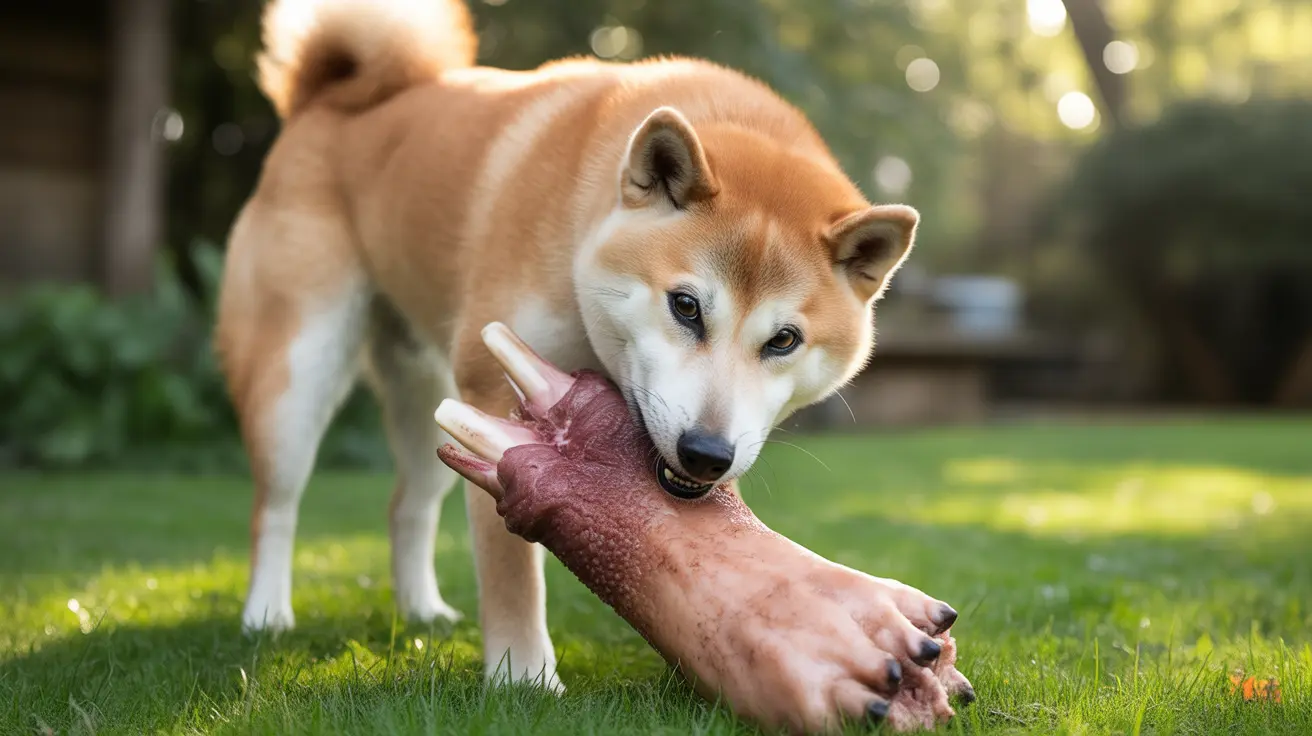The Nutritional Benefits of Pig Feet for Dogs
Pig feet offer several valuable nutrients that can contribute to your dog's health:
- High-quality protein (19-22g per 100g) for muscle maintenance
- Natural collagen and glucosamine for joint health
- Chondroitin sulfate supporting cartilage health
- Essential minerals including calcium and phosphorus
- Healthy fats and omega fatty acids
Natural Dental Benefits
Raw or dehydrated pig feet can serve as natural dental cleaners. The mechanical action of chewing helps remove plaque and tartar buildup, promoting better oral hygiene. This can be particularly beneficial for dogs prone to dental issues.
Safety Considerations When Feeding Pig Feet to Dogs
Raw vs. Cooked: What's Safe?
Raw or dehydrated pig feet are generally safer than cooked versions. Cooking makes the bones brittle and prone to splintering, which can cause serious internal injuries. Never feed your dog cooked pig feet bones.
Size and Breed Considerations
Not all dogs should be given pig feet:
- Large breeds: Generally suitable with proper supervision
- Medium breeds: Use appropriately sized portions
- Small breeds: May need alternative treats due to size concerns
- Seniors: Consider their dental health and chewing ability
How to Safely Introduce Pig Feet to Your Dog's Diet
Follow these guidelines when introducing pig feet:
- Start with small portions to assess tolerance
- Monitor your dog while they chew
- Store raw pig feet properly in the refrigerator
- Source from reputable suppliers
- Limit treats to no more than 10% of daily caloric intake
Potential Risks and Warning Signs
Watch for these potential issues:
- Choking hazards from large pieces
- Digestive upset (particularly with high-fat content)
- Bacterial contamination from raw meat
- Dental damage from aggressive chewing
- Pancreatitis risk in sensitive dogs
Frequently Asked Questions
Can dogs safely eat pig feet bones, and should they be raw or cooked?
Dogs can safely eat raw or dehydrated pig feet bones, but never cooked ones. Cooked bones can splinter and cause serious internal injuries. Always supervise your dog when giving them any type of bone.
What are the health benefits of feeding pig feet to dogs, especially for joints and dental care?
Pig feet are rich in natural collagen, glucosamine, and chondroitin, which support joint health. The natural chewing action helps clean teeth and reduce plaque buildup, promoting better dental hygiene.
What are the risks associated with giving cooked pig feet bones to dogs?
Cooked pig feet bones can splinter easily, potentially causing choking, internal punctures, or blockages in the digestive system. They should never be fed to dogs in this form.
How should I introduce pig feet into my dog's diet to avoid digestive issues?
Start with small portions and monitor your dog's reaction. Introduce them gradually over several weeks, watching for any signs of digestive upset. If problems occur, discontinue use and consult your veterinarian.
Are pig feet suitable for all dog sizes and breeds, or are there specific recommendations?
Pig feet are generally more suitable for medium to large breeds. Small dogs may struggle with the size and could be at higher risk for choking. Consider your dog's size, age, and chewing habits before offering pig feet.
Conclusion
While pig feet can be a nutritious and enjoyable treat for dogs, they must be offered with proper precautions. Always choose raw or dehydrated options, supervise your pet while they chew, and consider your dog's individual needs and health status. When in doubt, consult with your veterinarian before introducing pig feet into your dog's diet.






